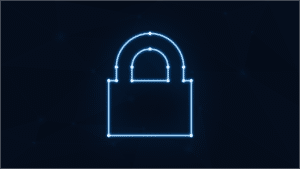
The Cybersecurity Landscape in 2023
As technology continues to evolve, so do the security threats and vulnerabilities that come with it. 2023 is likely to bring a wealth of new cybersecurity trends, some of which are already becoming apparent. From the emergence of artificial intelligence (AI) for cyber defence to the growing demand for privacy regulations, understanding the current landscape and what’s coming down the pike is vital for any organization wanting to stay ahead of cybercriminals.
Rise of Automation
The sheer volume of data generated daily across networks and devices makes it nearly impossible for cybersecurity teams to monitor all activity manually. As a result, more organizations are turning to automation to efficiently detect anomalies before they become costly attacks. AI-powered tools can be trained to recognize patterns within system data—including user behaviour—and flag activities that seem out of the ordinary or malicious. Automating processes like patch management, malware scanning, and vulnerability assessment can also free up valuable time and resources so that security professionals can focus on more complex tasks.
Increased Focus on Privacy Regulations
The General Data Protection Regulation (GDPR) has been in effect since 2018, but many organizations are still not compliant with its strict privacy regulations. In 2023, there will be an even greater emphasis on protecting consumer data and ensuring compliance with these laws. Companies need to have comprehensive strategies in place that include measures such as encryption and two-factor authentication as well as regular audits and monitoring practices. It’s also important for businesses to keep up with any changes or updates made to GDPR or other relevant regulations nationally and globally so they know their responsibilities regarding consumer data protection.
Stronger Network Security
As network infrastructure continues to expand across distributed assets, organizations will be placing greater emphasis on network security solutions like firewalls, intrusion prevention systems (IPSs) and virtual private networks (VPNs). These solutions provide layers of defence that protect against malicious threats while also allowing legitimate traffic into an environment safely. In addition, companies should consider investing in identity access management (IAM) systems that allow them to control who has access to sensitive areas within their networks based on each user’s role within the organization.
2023 promises plenty of new opportunities for cybersecurity teams to defend their organizations from online threats. While automation offers efficient detection capabilities, it is just one piece of the puzzle; businesses must also ensure compliance with regulations such as GDPR and invest in network security solutions that offer robust protection against attackers without limiting legitimate traffic flow into their environments. With these strategies in place, organizations can rest assured that their digital assets are secure from malicious actors.


